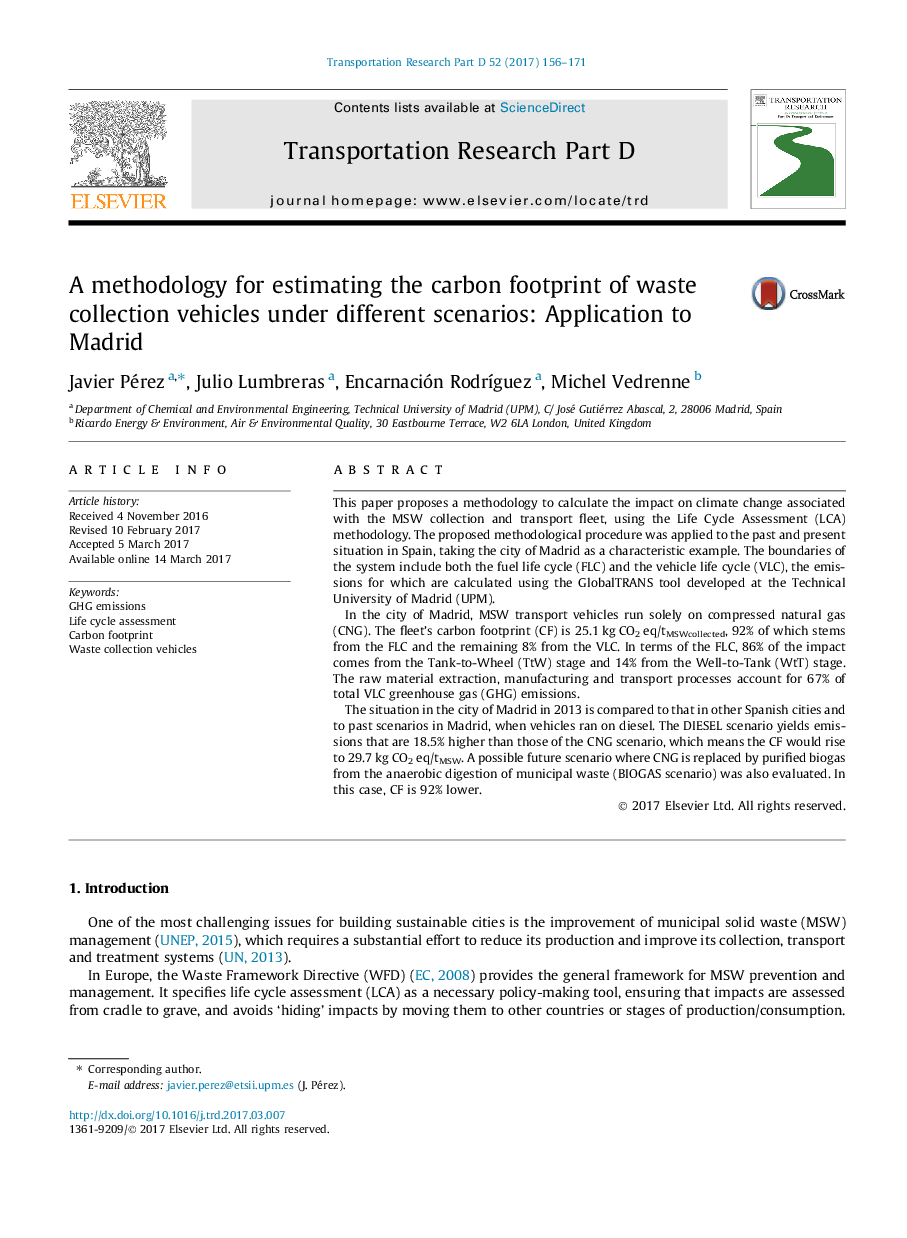| کد مقاله | کد نشریه | سال انتشار | مقاله انگلیسی | نسخه تمام متن |
|---|---|---|---|---|
| 5119258 | 1378208 | 2017 | 16 صفحه PDF | دانلود رایگان |
- A procedure to calculate carbon footprint of waste collection based on Life Cycle Assessment methodology.
- Fuel life cycle has a greater contribution to carbon footprint than vehicle life cycle (92% versus 8%).
- Natural gas reduces a 15.6% the carbon footprint respect diesel.
- Use of biomethane from anaerobic digestion in waste collection trucks can be a great solution to reduce carbon footprint.
- Local conditions highly influence on carbon footprint.
This paper proposes a methodology to calculate the impact on climate change associated with the MSW collection and transport fleet, using the Life Cycle Assessment (LCA) methodology. The proposed methodological procedure was applied to the past and present situation in Spain, taking the city of Madrid as a characteristic example. The boundaries of the system include both the fuel life cycle (FLC) and the vehicle life cycle (VLC), the emissions for which are calculated using the GlobalTRANS tool developed at the Technical University of Madrid (UPM).In the city of Madrid, MSW transport vehicles run solely on compressed natural gas (CNG). The fleet's carbon footprint (CF) is 25.1 kg CO2 eq/tMSWcollected, 92% of which stems from the FLC and the remaining 8% from the VLC. In terms of the FLC, 86% of the impact comes from the Tank-to-Wheel (TtW) stage and 14% from the Well-to-Tank (WtT) stage. The raw material extraction, manufacturing and transport processes account for 67% of total VLC greenhouse gas (GHG) emissions.The situation in the city of Madrid in 2013 is compared to that in other Spanish cities and to past scenarios in Madrid, when vehicles ran on diesel. The DIESEL scenario yields emissions that are 18.5% higher than those of the CNG scenario, which means the CF would rise to 29.7 kg CO2 eq/tMSW. A possible future scenario where CNG is replaced by purified biogas from the anaerobic digestion of municipal waste (BIOGAS scenario) was also evaluated. In this case, CF is 92% lower.
Journal: Transportation Research Part D: Transport and Environment - Volume 52, Part A, May 2017, Pages 156-171
